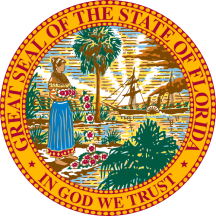For decades, its powerful lighthouse illuminated Miami’s Biscayne Bay, and during the height of the Cold War, what was known as the Freedom Tower stood as a beacon of hope for hundreds of thousands of Cubans fleeing communist rule.
The 14-story Spanish Revival skyscraper was where, from 1962 to 1974, the U.S. State Department welcomed Cuban refugees with medical services, English classes, and comfort kits containing essentials and something wholly exotic to the new arrivals: peanut butter.
The reopening of what’s dubbed the Ellis Island of the South comes at a sensitive moment.
Cuban Americans — who dominate politics in Miami — voted overwhelmingly for Donald Trump in the last presidential election. But the president’s crackdown on migrants — including Cubans — is increasingly viewed as a betrayal and has left many second-guessing that support.
Not surprisingly, recent protests against Trump have gathered outside the tower.
The organizers of the museum, while tiptoeing around the present-day politics, are nonetheless unapologetic in their embrace of the American dream.
Madeline Pumariega, president of Miami Dade College, which spearheaded the $65 million renovation, says : “In 1961 it opened its doors as the refugee center for the Cubans that were leaving Cuba because of communism and political persecution and were leaving their homes. They came to the Freedom Tower, to the refugee center, and that stayed open for a decade, and nearly 400,000 Cubans came through the Freedom Tower.”
In Miami, a thriving crossroads where 70% of residents speak Spanish as their first language and more than half are foreign-born, compassion for migrants runs deep.
AP Video by Daniel Kozin

 Associated Press US and World News Video
Associated Press US and World News Video
 Associated Press US News
Associated Press US News WSVN 7 News
WSVN 7 News Chicago Tribune
Chicago Tribune Local News in Florida
Local News in Florida Raw Story
Raw Story AlterNet
AlterNet NBC News
NBC News NBC4 Washington
NBC4 Washington Spectrum News Louisville
Spectrum News Louisville Washington Examiner
Washington Examiner